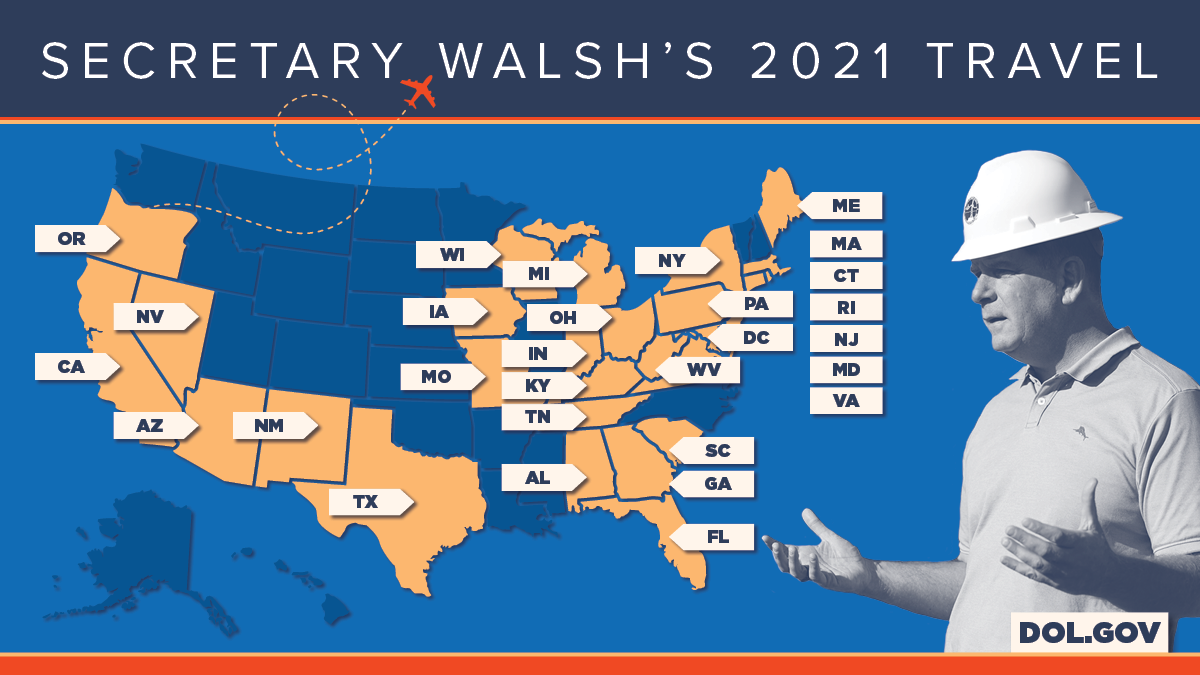
As I was sworn in as the 29th Secretary of the U.S. Department of Labor in March, I reflected on what the American dream means to me.
My parents are Irish immigrants who worked hard to support our family. We were able to join the middle class when my father joined the Laborers Union Local 223 in Boston, and in my 20s, I followed his footsteps into construction and joined the same union. I saw firsthand the sacrifices working people make to support their families and communities.
These experiences shape who I am today and inform my deep belief in the work of the Department of Labor.
And it’s why I believe more strongly than ever that working for working people means meeting them where they are.
So as Labor Secretary, I've made it my priority to travel across the country, 30 states and 60 cities (so far!), and hear directly from workers about their hopes, their struggles, and how the Biden-Harris administration can continue supporting them.
I was able to see how lead pipes impact communities like Harambee in Wisconsin, where the health of the children and everyone else depends on the success of a stalled lead pipe replacement project.
I saw how union-led job sites like this one in St. Louis, Missouri, can boost local economies by hiring locally.
I visited a public library in Dallas, Texas, that provides broadband internet for residents to help more people get access to online resources.
And I saw how electric vehicle programs like the University of California’s are bringing us closer to a clean energy future.
Visiting these communities and many more has informed my approach to how the Department of Labor will help implement the Bipartisan Infrastructure Law, which will repair our nation’s roads & bridges, replace lead pipes, expand broadband access to every community and address climate change – all through local, good-paying jobs.
But in order to win the 21st century, we need to invest in our workers and families.
Whether it’s a Job Corps center in New Mexico, union training facility in Indiana, technology training programs in Maryland, or an organization in Ohio that specializes in manufacturing, America’s workers benefit from educational and job training resources that give them the tools they need to succeed. That’s why the Build Back Better Act invests in workforce development – to prepare America’s workers to take on the jobs created by the Bipartisan Infrastructure Law.
Investing in Registered Apprenticeships and other job training programs helps build an inclusive workforce by opening more opportunities for more workers – but we need to support workers at home, too. Increasing access to affordable child care is essential to our communities and keeping working parents – especially mothers – in our workforce. But don’t take it from me – I've met parents, child caregivers, economists and business owners across the country who agree that the care investments in the BBB Act will play a key role in building equity and strengthening our workforce.
I’m proud to be part of the most pro-worker administration in history. We’ve made historic progress this year, but we still have more work to do. I’ll see you on the road.
Marty Walsh is the U.S. Secretary of Labor. Follow him on Twitter and Instagram at @SecMartyWalsh.

 U.S. Department of Labor Blog
U.S. Department of Labor Blog